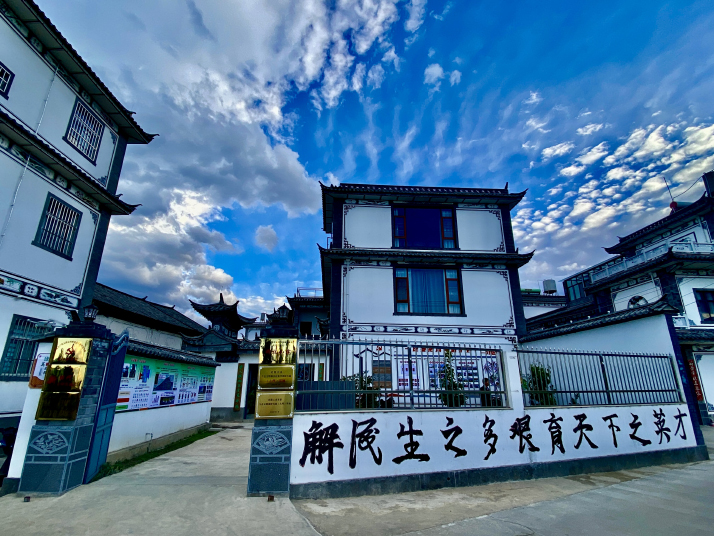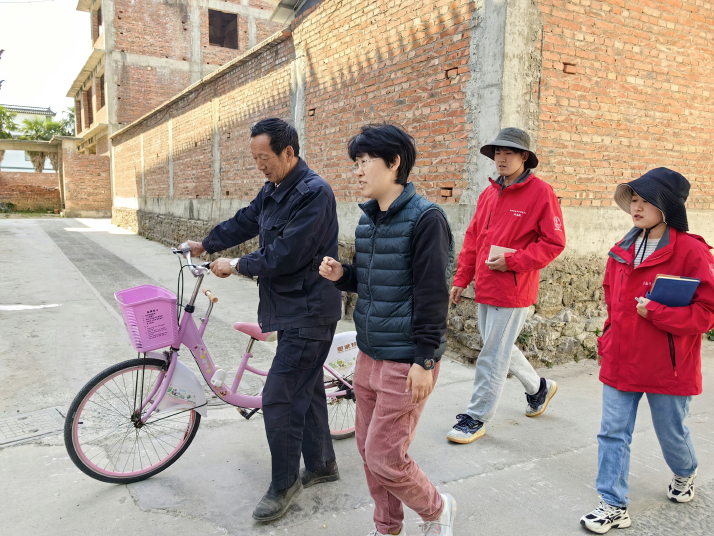| China |
| Science and technology backyards boost rural development | |
|
|
 A Science and Technology Backyard in Gusheng Village of Dali Bai Autonomous Prefecture, Yunnan Province, in April 2023 (COURTESY PHOTO)
A delegation of teaching staff and students from different universities across China have made themselves at home in the village of Gusheng in Dali, southwest China's Yunnan Province, since they traveled there in March 2022. In the dormant village "yards," they launched the Science and Technology Backyard (STB). Many of them have stayed in the village for over 300 days, leading to significant transformations within the local community. Initiated and led by plant nutrition expert Zhang Fusuo, Dean of the National Academy of Agriculture Green Development at the China Agricultural University (CAU) and a member of the Chinese Academy of Engineering, the STB involves agricultural researchers immersing themselves in rural regions to conduct studies and offer farmers free guidance. The STB in Gusheng Village was launched in February 2022 through a collaboration between CAU, Yunnan Agricultural University and the local government of Dali Bai Autonomous Prefecture. Situated between the picturesque Cangshan Mountain and Erhai Lake, both renowned tourist attractions celebrated for their natural splendor, Gusheng serves as an ideal location for the STB's activities. Jin Kemo, an associate professor of root-soil interaction at CAU's College of Resources and Environmental Sciences, joined Zhang's STB in Gusheng in 2022. She told Beijing Review Dali now has 15 STBs, with seven located in Gusheng. As part of the CAU training system, postgraduate students majoring in agriculture are expected to spend two years working at STBs to do research. Currently, the STBs in Gusheng have 15 mentors and around 100 students, half of whom are affiliated with CAU, according to Jin. The team injected fresh energy into the village, as Jin explained. "The researchers have been exploring ways to improve environmental preservation while enhancing agricultural yields," she said. Eco-nomy Erhai Lake, spanning 252 square km, is a vital water source for the residents of Dali. Recent years have witnessed significant enhancements in the lake's water quality, credited to the proactive measures implemented by the local government. Efforts included the closure of mines and the relocation of homestays situated near the lake's shores. Overall, the relocation of homestays away from a lake's shores, for example, helps minimize direct pollution inputs, reduce runoff of contaminants, preserve natural ecosystems, and prevent erosion, all of which contribute to the improvement of the lake's water quality. But despite these improvements, problems persisted in the excessive use of fertilizer and low agricultural yields. To address these issues, the local government in 2021 sought the expertise of Zhang to help with the transition toward more sustainable agricultural practices. Jin joined Zhang's team there right after finishing her studies overseas. Jin expressed the dilemma of balancing the preservation of Erhai Lake's ecological environment with the economic needs of rural households. She highlighted that while growing vegetables can yield significant profits for farmers, it also results in high water and fertilizer consumption. Crops like rice, which have lower pollution levels, tend to have lower output. And so, the team started from reducing water pollution. Since April 2022, the researchers have collected more than 3,000 water samples and conducted over 20,000 analyses, monitoring the water quality across a 4.8-square-km area. "The village's STBs have implemented a water body monitoring system. When heavy rainfall causes water to flow from the fields into the lake, the members promptly visit every site to collect water samples and conduct quality tests," Jin explained. Research findings indicated that the village's farmland accounted for 35-55 percent of the pollution, while sewage water contributed 39-51 percent. "It took some time to persuade the farmers to reduce their fertilizer use, as many believed it would be impossible to maintain crop output if they did so," Jin noted. The team introduced green fertilizers that are more efficiently absorbed by rice, corn and tobacco, leaving minimal residue in fields. They also promoted biodegradable mulch, resulting in a 30-percent increase in rice output, a 30-percent reduction in nitrogen and phosphorus runoff, and a 50-percent decrease in fertilizer costs. Furthermore, the researchers implemented a new cropping system where crops and vegetables like rapeseed are grown alternately in the same field each year. This practice boosted farmers' income from rapeseed cultivation by over 300 percent. Due to pollution caused by garbage and sewage from daily human activities, team members have been collecting samples from garbage bins to convert waste into fertilizer. Additionally, they conduct door-to-door visits to collect sewage water from villagers' houses for analysis. One of the students has been actively advocating for healthier lifestyles among villagers, encouraging them to shift away from cooking habits that involve heavy use of salt and oil. Their heavy use can indirectly affect the environment through household wastewater. "This initiative also plays a role in reducing pollution from household wastewater, which contributes to the unchecked growth of algae in the lake, ultimately impacting the ecosystem," Jin said.  Jin Kemo (second left), an associate professor at China Agricultural University, and her students talk with a villager in Gusheng in 2023 (COURTESY PHOTO)
Planting seeds of prosperity The STB members also taught the residents of Gusheng, a village with more than 400 households, to shoot and edit videos to promote their village on social media platforms for tourism purposes and encouraged them to convert their idle homes into homestays. In early 2022, Dali, a popular domestic travel destination, gained more attention through short videos shared on platforms like Douyin, the Chinese version of TikTok. As a result, some villagers in Gusheng were able to earn up to 10,000 yuan ($1,389) a day by offering accommodation to tourists. "In 2022 and 2023, the STB boosted Gusheng's annual revenue by over 5 million yuan ($690,000). More and more villagers are now transforming their idle homes into homestays," Lu Yang, a student involved in the program, told Beijing Review. Wang Dongmei is one of the students who set up base in Gusheng two years ago. During her time there, she noticed that many local Bai ethnic group members excelled in embroidery and wood carving techniques. To diversify their sources of income, Wang initiated an e-commerce training course. This course teaches villagers, among other things, to make short videos showcasing their traditional craftsmanship. The follower numbers on the Douyin accounts she created for some of them have continued to mushroom. Further expansion In 2009, CAU partnered with the government of Quzhou County in north China's Hebei Province, to create the country's inaugural STB in Quzhou's Baizhai Township. Within the same year, with the team's assistance in improving agricultural productivity, the annual income of local farmers increased by 3.5 million yuan ($486,200). So far, CAU has established 139 STBs in 24 provincial-level regions nationwide. As of 2023, the total number of STBs in China had grown to over 1,000. In 2019, CAU also initiated a China-Africa STB in Quzhou aimed at offering agricultural training to African students. Subsequently, as part of the program, a demonstration village focused on agricultural development and poverty alleviation was established in Malawi, a landlocked country in Southeast Africa, in 2022. As of this year, the STB has successfully trained over 70 African students. The program's model has garnered recognition and has been endorsed by the Food and Agriculture Organization of the United Nations, leading to its promotion in Southeast Asian and African countries. Jin noted that promoting agricultural technologies among farmers for high-quality agricultural development should be a global endeavor. She emphasized that while setting up an STB is relatively straightforward, ensuring its sustainable operation poses a significant challenge. "The researchers are currently creating comprehensive and systematic plans to facilitate the widespread implementation of the model in rural areas," she said. (Print Edition Title: A Yard of Yields) Copyedited by Elsbeth van Paridon Comments to lixiaoyang@cicgamericas.com |
|
||||||||||||||||||||||||||||||
|
